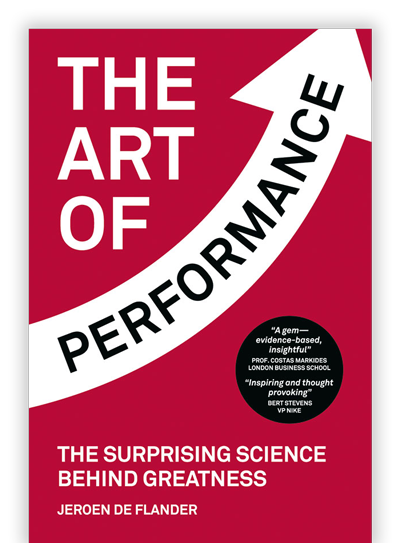The Goal Setting Theory from Prof. Edwin Locke and Gary Latham is one of the most useful theories in psychology and organisational science. In the late 60’s, Latham and Locke’s goal setting research led to the Goal Setting Theory.
In 1968, their article Toward a Theory of Task Motivation and Incentives, covered the basic goal setting findings. In 1990, Locke and Latham published A Theory of Goal-setting & Task Performance, a groundbreaking study based on 400 laboratory and field experiments carried out over 25 years.
Let’s take a closer look at the essence of goal-setting theory and see how it can help us to achieve superior performance in the workplace:

Goal Setting Theory: summary
The goal-setting theory is widely supported by research. More than 100 scientific studies involving 40,000 participants from different industries support the benefits from goal setting in the workplace. And these figures don’t even include any goal setting research that took place in the world of sport.
Here we go:
The goal setting theory – the 12 basics
1. Working with goals generally increases performance versus not working with goals.
2. Goals directly affect performance by steering what people pay attention to and how long and hard they work:
- Smart goals direct our attention and effort towards goal-relevant activities and away from goal-irrelevant activities.
- Goals have an energizing function and make us work harder.
- Smart goals make us more persistent. This results in us working more thoroughly.
3. Goals indirectly affect performance by motivating people to discover and utilize task strategies which will facilitate goal achievement:
- People will automatically draw on a repertoire of skills they have previously used in a related context and apply them to crack the current challenge.
- People will engage in deliberate planning to develop strategies that will enable them to attain their goals.
4. Difficult goals, when accepted, result in a higher level of performance than those of easy goals.
5. Specific goals work better than non-specific goals. That is, people perform better with clear stated goals rather than other types such as ‘do your best’ or ‘work hard’.
6. If people face a task they find very complex, use learning goals instead of performance goals to improve overall performance. Why? Because performance goals can make people so anxious that they fail to systematically look for solution strategies and learn what is effective.
7. The stronger the goal commitment, the higher the likelihood of success. Goal commitment increases when the goal is considered important and achievable.
8. People with a high self-efficacy – a task-specific self-confidence – are more committed to assigned goals, find and use better task strategies to attain them, and respond more positively to negative feedback than do people with low self-efficacy.
9. Self-confidence can be improved by providing adequate training, by role modelling and by using persuasive communication.
10. Regular feedback on their goal progression improves people’s performance.
11. Incentives shouldn’t discourage risk taking, such as striving for near impossible goals.
12. Goal setting doesn’t work when the reward mechanism is inappropriate.
Goal Setting Theory in the workplace: 6 rules for success
Setting challenging and motivational goals is one of the best ways of improving performance – yours, your team’s or even that of the entire organization. So let the goal setting theory be your starting point.
And once you’ve covered the basics, you can take your goal setting to the next level in the workplace by applying these 6 rules:
Read more: if you are interested in personal goals, read this article about personal goal setting.

#1. Don’t break the business strategy chain when you focus on smart goal setting
Setting individual goals in a company isn’t an isolated exercise. In fact, it’s the final step in a series of events, all aimed at dividing the business strategy into smaller parts. The sum of your goals is your strategic action plan!
In order to make it all add up, the relationship with the next level up is crucial. Without it, the organizational value is completely lost and could result in great sounding goals which don’t support your business strategy.
Here are 5 practical tips:
1. Make sure you understand the overall business strategy. If you don’t, you won’t be able to explain it. If things are not clear, it’s your responsibility to take action. Don’t blame your boss or someone else for not understanding the strategy.
2. Make sure you have a good understanding of the objectives defined on the organisational level above you. These will serve as your framework.
3. Spend time communicating the strategy to your team. It will help them to understand the relationship of their objectives to the overall strategy and the importance of their contribution. It will also increase their commitment towards their own goals.
4. Visualize the link between lower- and higher-level goals. Use a simple spreadsheet to connect the individual goals with the higher-level goals.
5. Take ongoing responsibility to align objectives across hierarchical levels. Take ownership to connect lower-level goals with yours and make certain yours fit with the next level up. Don’t expect others to do it for you.
#2: To make the goal setting theory work, make sure all the goals add up
Imagine you are the manager of an IT department comprised of 30 people, of whom eight are project managers, 19 project members and three support staff. You discover, via an internal audit, that only 73 percent of your projects deliver results on time and within budget. The main reason: poor project management.
You ask HR to find a good project management skills course and, being a good performance management scholar, give all eight project managers the following SMART goal: to take a two-day project management course in the following three months.
How great are your chances of attaining a better score on your next project delivery audit?
Pretty low, wouldn’t you say?
And that’s not because the goal itself is wrong. But because other goals are missing to complement this one. In other words, the lower-level goal of sending your eight project managers on a two-day course, won’t be enough to achieve your overall goal of improving the project delivery on time and on budget.
Always ask yourself the following question: ‘Would I bet my own money on this combination of goals to reach the one above?’.
If the answer is no, you still have some work to do.
Here are two actions you might want to consider:
- What other smart goals can you add to increase the likelihood of success? Make a list. Rank all actions, starting with the one you think has the most impact on the realization of your overall goal.
- Try to reformulate the existing goals.
So to sum up, evaluate not only if smart goals contributes to the overall goal, but also question if the ‘smart goal’ contribution is large enough.
If not, take action.

#3: SMART goal setting: don’t be too SMART
What does the ‘T’ stand for in SMART? Is it ‘Time-based’ or was it…?
When I talk to managers, I often feel that goal setting has been downgraded to a ‘using the SMART technique’ drill. The essence has been lost. The acronym is well-known but few understand the real dynamics of goal setting and the added value for the successful implementation of a strategy.
Most managers are clueless and thousands of company money is spent on training to reinforce this ignorance. So does this mean that the SMART model is ineffective in today’s working world? Not at all. It still has a lot of advantages – it’s recognized by most managers and is a great aide memoire for goal setting.
Just be careful that ‘making goals smart ‘doesn’t become a goal in itself.
#4. Don’t assume too quickly that someone is motivated in the workplace
As you know, whether its personal goals or goals in the workplace, commitment is crucial to goal setting success.
No commitment means no performance, whatever else you try. So while most managers focus only on the objectives, you want to focus on the objectives and the other person in the room, obtaining that crucial commitment.
But be careful. Peter Senge, author of the best-seller The Fifth Discipline, believes that “Ninety percent of the time, what passes for commitment is compliance”.
In other words, you might think you have that very important goal commitment in the bag, but in reality, you don’t. You only have something that resembled the real thing.
Here’s a short video where I talk about goal setting commitment at the strategy summit a few years ago:
#5. The goal setting theory requires to get the leadership goals right
Most people find it difficult to define high-quality leadership goals. In fact, almost all managers I know find it much easier to define ‘hard’ business goals than ‘soft’ ones.
But instead of putting in the extra effort required to get them right, they take the easy way out and end up with leadership objectives such as ‘go to leadership training’, ‘organise more communication sessions’ or ‘work on your management skills’.
So what’s the magic trick to define those leadership objectives?
Here are just a few that will help you get the job done:
1. Think and talk behavior. Describe and discuss suitable behavior – and equally or even more importantly, what doesn’t fit.
2. Compare behavior. Do you know somebody who has the right leadership behavior? Use them as an example in your discussion.
3. Keep it simple. Competency dictionaries and leadership models often provided are way too detailed and won’t serve your purpose.
4. Don’t try too hard! Don’t overdo the measuring part. People with SMART training under their belts have been taught to make every goal measurable. But participants need a discussion and feedback, not a mathematical formula.
A final comment: most people are interested in self-development and time and effort invested in helping them define high-quality leadership goals increases motivation. Discussing leadership goals will take the working relationship to another level. And often opens the door for performance coaching.
#6. Don’t let a template ruin an important goal setting exercise
Ideally you shouldn’t need to worry about templates. But since the world isn’t ideal, you might be faced with a highly complex and user-unfriendly goal setting template.
But don’t let a poor-quality template affect your professionalism. Don’t allow your meeting to disintegrate into a ‘we have to fill in this template for corporate reasons’ exercise. This won’t do justice to either you or your colleagues.
Keep the quality standards as high as possible. Start with a blank sheet of paper if it helps. You can always transfer the results of your meeting onto the goal setting template later.
And don’t forget to tell those in charge that the document isn’t fit for the job. If they are smart, they will get to work.
Tip: if you are looking for one, here’s a simple goal setting template
Motivational Goal setting quotes
And finally, some inspiration to kick start your goal setting improvement efforts.
Here’s a list with goal setting quotes

Like this article about the goal setting theory?
Want to inspire others?
Share now!



